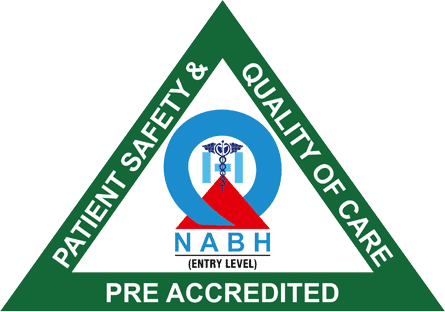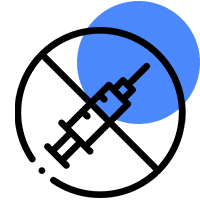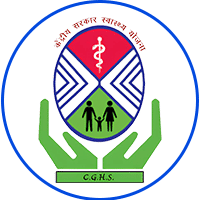Introduction: Clear Vision, No Glasses Is It Really Possible?
For anyone struggling with high myopia (nearsightedness) or astigmatism, wearing glasses or contact lenses can become frustrating over time. Constant maintenance, discomfort, and dependency often make people wonder “Is there a permanent solution?”
The answer is yes, LASIK surgery. Modern laser eye surgery for astigmatism and high myopia has evolved into a safe, precise, and highly effective procedure.
At Iksha Eye Care, Mumbai, led by Dr. Bhushan Ghodke, a leading specialist in Cataract, Cornea, and Refractive Surgery, patients receive advanced LASIK treatments designed for customized vision correction with exceptional safety and accuracy.
1. Understanding LASIK and How It Works
LASIK (Laser-Assisted In Situ Keratomileusis) is a laser vision correction procedure that reshapes the cornea the front part of your eye to correct refractive errors like myopia (nearsightedness), hypermetropia (farsightedness), and astigmatism.
How LASIK Works:
- A thin flap is created on the cornea using a femtosecond laser.
- The underlying corneal tissue is reshaped with an excimer laser to correct vision.
- The flap is then repositioned to heal naturally no stitches required.
At Iksha Eye Care, the use of blade-free laser technology ensures greater precision, faster recovery, and minimal discomfort during and after surgery.
2. LASIK for High Myopia: Can It Correct Strong Prescriptions?
High myopia refers to severe nearsightedness, where distant objects appear blurry because light focuses in front of the retina instead of on it. People with -6.00 diopters or higher typically fall into this category.
How LASIK Helps in High Myopia:
- The laser reshapes the cornea to focus light correctly on the retina.
- Vision clarity improves significantly, reducing or eliminating the need for glasses.
- Most patients achieve 20/20 vision or close to it within 24–48 hours post-surgery.
Iksha Eye Care evaluates every patient thoroughly to determine corneal thickness, eye power, and retina health before recommending LASIK. For extremely high myopia, alternative laser procedures such as PRK or ICL (Implantable Collamer Lens) may be considered ensuring complete safety and best outcomes.
3. LASIK for Astigmatism: Precise Correction for Uneven Vision
Laser Eye Surgery for Astigmatism
Astigmatism occurs when the cornea has an irregular curvature, leading to distorted or blurred vision at all distances. Many patients believe LASIK cannot treat astigmatism but that’s a misconception.
LASIK Eye Surgery for Astigmatism:
- The laser reshapes uneven parts of the cornea, allowing light to focus evenly on the retina.
- It corrects both regular and mixed astigmatism effectively.
- The procedure is quick, painless, and offers long-term results.
Iksha Eye Care uses wavefront-guided LASIK, which maps each eye’s unique curvature to achieve personalized correction ensuring sharp, distortion-free vision.
4. Safety of LASIK for High Myopia and Astigmatism
One of the most common concerns patients have is: “Is LASIK safe for high power or astigmatism?” The answer is yes with modern technology and expert evaluation.
Why LASIK is Safe at Iksha Eye Care:
- Advanced Diagnostics: Each patient undergoes a corneal topography, pachymetry, and eye pressure analysis before surgery.
- Custom LASIK Planning: The procedure is tailored to your eye structure and refractive error.
- Femtosecond & Excimer Lasers: Ensures bladeless precision with minimal tissue disturbance.
- Expert Supervision: Performed by Dr. Bhushan Ghodke, a highly experienced LASIK surgeon.
At Iksha Eye Care, LASIK is only recommended after confirming full eligibility ensuring long-term visual stability and safety.
5. What to Expect After LASIK Surgery
Post-Surgery Experience:
- Immediate Improvement: Most patients notice better vision within 24 hours.
- Painless Recovery: Mild dryness or sensitivity may occur temporarily.
- Quick Return to Normal: You can resume normal activities in 2–3 days.
Aftercare Tips:
- Avoid rubbing your eyes for a few weeks.
- Use prescribed eye drops regularly.
- Protect eyes from dust and water during recovery.
- Attend follow-up checkups as scheduled.
At Iksha Eye Care, patients receive comprehensive post-operative care, ensuring clear, stable vision and minimal complications.
6. LASIK vs. Other Vision Correction Options
| Procedure | Best For | Recovery Time | Key Advantage |
| LASIK | Mild to high myopia, astigmatism | 1–2 days | Quick, bladeless, long-term correction |
| PRK | Thin corneas or surface correction | 5–7 days | No flap, suitable for thin corneas |
| SMILE | Myopia, some astigmatism | 1–2 days | Minimally invasive, no flap |
| ICL | Very high myopia | 3–5 days | Reversible, suitable for extreme power |
At Iksha Eye Care, your surgeon will recommend the most suitable option based on your eye health and power.
7. Results and Long-Term Safety
LASIK has an excellent success rate globally over 95% of patients achieve 20/25 vision or better.
At Iksha Eye Care, patients with high myopia and astigmatism have seen permanent correction, stable results, and improved quality of life.
Long-Term Benefits:
- No more dependency on glasses or contacts.
- Clear night vision and better depth perception.
- Durable correction lasting for decades.
Regular follow-ups ensure your eyes stay healthy post-surgery, with no regression or side effects.
8. Conclusion: Safe, Precise, and Life-Changing Vision Correction
If you’re tired of blurry vision and constant lens maintenance, LASIK for high myopia and astigmatism could be your gateway to freedom.
With advanced laser technology, experienced surgeons, and strict safety protocols, Iksha Eye Care offers one of the safest and most successful laser eye surgeries for astigmatism and myopia correction in Mumbai.
So, if you’ve been waiting for the right time, schedule your LASIK consultation at Iksha Eye Care today and experience crystal-clear vision without glasses.
FAQs
Q1: Is LASIK safe for high myopia?
Yes. With modern bladeless LASIK and thorough screening at Iksha Eye Care, LASIK is safe and effective even for high myopia.
Q2: Can LASIK correct astigmatism?
Yes. LASIK eye surgery for astigmatism reshapes the cornea to correct uneven curvature, improving visual clarity.
Q3: What is the difference between LASIK and PRK?
LASIK involves creating a corneal flap, while PRK reshapes the cornea’s surface both are effective for vision correction.
Q4: How long does recovery take after LASIK?
Most patients regain clear vision within 24–48 hours and resume normal activities in 2–3 days.
Q5: Who performs LASIK at Iksha Eye Care?
All LASIK procedures are performed by Dr. Bhushan Ghodke, an experienced cataract and refractive surgeon.















